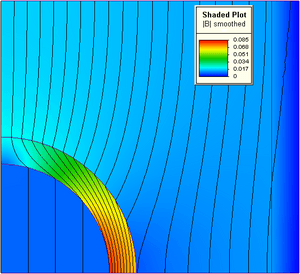Finite element method facts for kids
The Finite Element Method (FEM) is a smart way that computers solve tricky math problems. It's like breaking a big, complicated puzzle into many smaller, simpler pieces. Engineers use this method a lot to design things like cars, bridges, and even airplanes. It helps them understand how these things will behave under different forces, like how a car might bend in a crash.
Contents
What is the Finite Element Method?
The Finite Element Method, or FEM, is a powerful computer tool. It helps engineers and scientists solve complex math problems, especially those involving differential equations. These equations describe how things change and move in the real world.
How Does FEM Work?
Imagine you have a big, complicated shape, like a car body. If you want to know how it will react in a crash, it's hard to calculate everything at once. FEM breaks this big shape into many tiny, simple shapes, called "finite elements." These elements are often triangles or squares in 2D, or pyramids and cubes in 3D.
Each small element is much easier to analyze. The computer then solves the math problems for each tiny piece. Finally, it puts all the solutions from the small pieces together to get an answer for the whole big shape. This way, even very complex problems become solvable.
Why is FEM So Popular?
FEM is very popular in many areas of engineering. This is because it makes solving difficult problems much easier. You don't need to be a super expert in advanced mathematics to use it. Basic algebra skills are often enough to get started.
For example, engineers use FEM to:
- Design safer cars by predicting how they deform in crashes.
- Build stronger bridges and buildings.
- Understand how heat flows through materials.
- Design parts for aircraft, making sure they are strong enough to fly safely.
Using FEM Correctly
While FEM is easy to use, it's also important to use it wisely. Getting a solution from the computer is one thing, but making sure that solution is correct is another. It's always a good idea to check the computer's results with real-world tests or experiments. This helps make sure the computer model is accurate and reliable.
For instance, in structural analysis, which deals with how structures hold up, engineers need to understand how FEM works deeply. This helps them create good models and get trustworthy answers. Many parts of modern aircraft are designed and checked using FEM.
Related Topics
Images for kids
See also
 In Spanish: Método de los elementos finitos para niños
In Spanish: Método de los elementos finitos para niños






